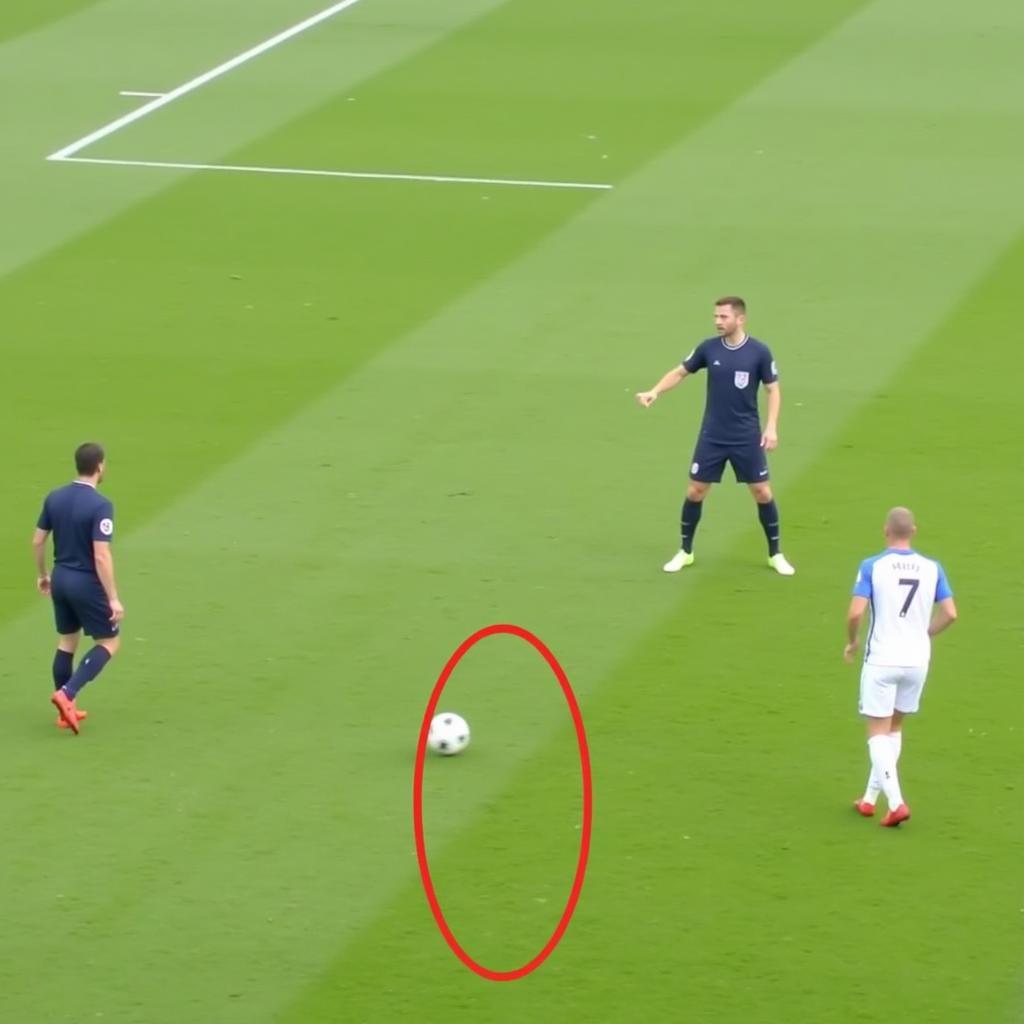Understanding the Two-Player Offside Rule in Football
January 9, 2025The two-player offside rule, often a source of confusion, is a crucial aspect of football. It dictates when an attacking player is in an offside position relative to the second-to-last defender, typically the goalkeeper and one other outfield player. Understanding this rule is key for both players and fans. Let’s delve into the intricacies of this often-misunderstood rule.
Breaking Down the Two-Player Offside Rule
The offside rule aims to prevent attackers from gaining an unfair advantage by simply waiting near the opponent’s goal. The key lies in the position of the attacker relative to the second-to-last defender when the ball is played to them. If any part of their body that can legally score (head, torso, feet) is closer to the opponent’s goal line than both the ball and the second-to-last defender, they are considered offside. Remember, the goalkeeper is usually the last defender, making the second-to-last defender a crucial point of reference.
Common Misconceptions about the Two-Player Offside Rule
There are several common misunderstandings surrounding the two-player offside rule. One is the belief that being level with the second-to-last defender is always offside. This is incorrect; being level is perfectly legal. Another misconception is that the rule applies only when the ball is passed forward. This is also false; a backward pass can also trigger an offside if the player receiving it is in an offside position when the ball is played.
“The offside rule, particularly the two-player aspect, often gets misconstrued. Players need to constantly be aware of their positioning relative to the second-to-last defender, not just the last one,” says renowned football coach, Johan Cruyff Jr.
video cầu thủ vasco đánh binh duong
It’s important to note that being in an offside position isn’t an offense in itself. The offense occurs only when the player actively becomes involved in the play while in that offside position, for example, by receiving a pass or interfering with an opponent.
Practical Examples of the Two-Player Offside Rule
Imagine a scenario where the goalkeeper is rushing out to clear a long ball. An attacker is positioned behind the last remaining defender but level with the second-to-last defender, who is further up the field. In this case, the attacker is onside. Now, suppose the attacker was slightly ahead of the second-to-last defender. In this scenario, if the ball was played to them, they would be offside.  Offside Position Example
Offside Position Example
“Understanding the nuances of the two-player offside rule can be the difference between a goal and a missed opportunity. It’s about timing, awareness, and precision,” states former referee, Pierluigi Collina II.
How to Avoid Being Caught Offside
To avoid being offside, attackers must constantly monitor their positioning relative to the second-to-last defender. This requires excellent spatial awareness and anticipation. Timing runs effectively and reacting to the movement of the defense is crucial. Players should practice their timing and understanding of the rule in training to avoid costly offside calls during matches.
Conclusion: Mastering the Two-Player Offside Rule
The two-player offside rule, although complex, is a fundamental element of football. Understanding its intricacies, including common misconceptions and practical applications, is crucial for both players and fans. By mastering this rule, players can improve their strategic play and avoid being caught offside, while fans can gain a deeper appreciation for the tactical aspects of the game. Remember, being level with the second-to-last defender is not offside!
When you need assistance, please contact us via Phone: 0396443476, Email: [email protected] Or visit our address: 23 Tháng 3, Đắk Nia, Gia Nghĩa, Đắk Nông, Việt Nam. We have a 24/7 customer support team.